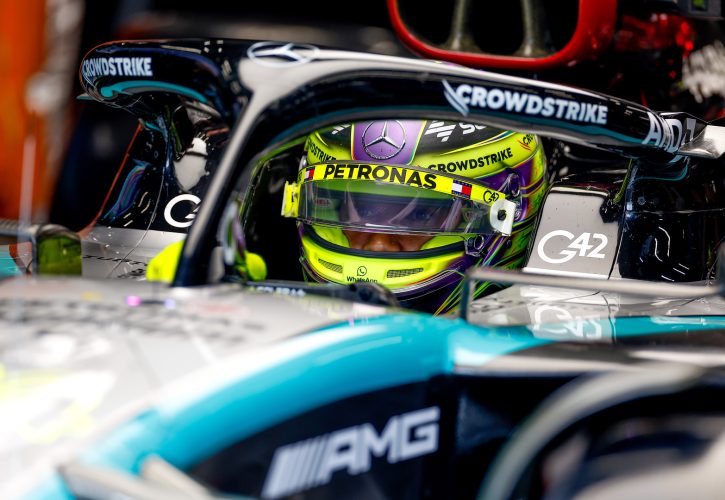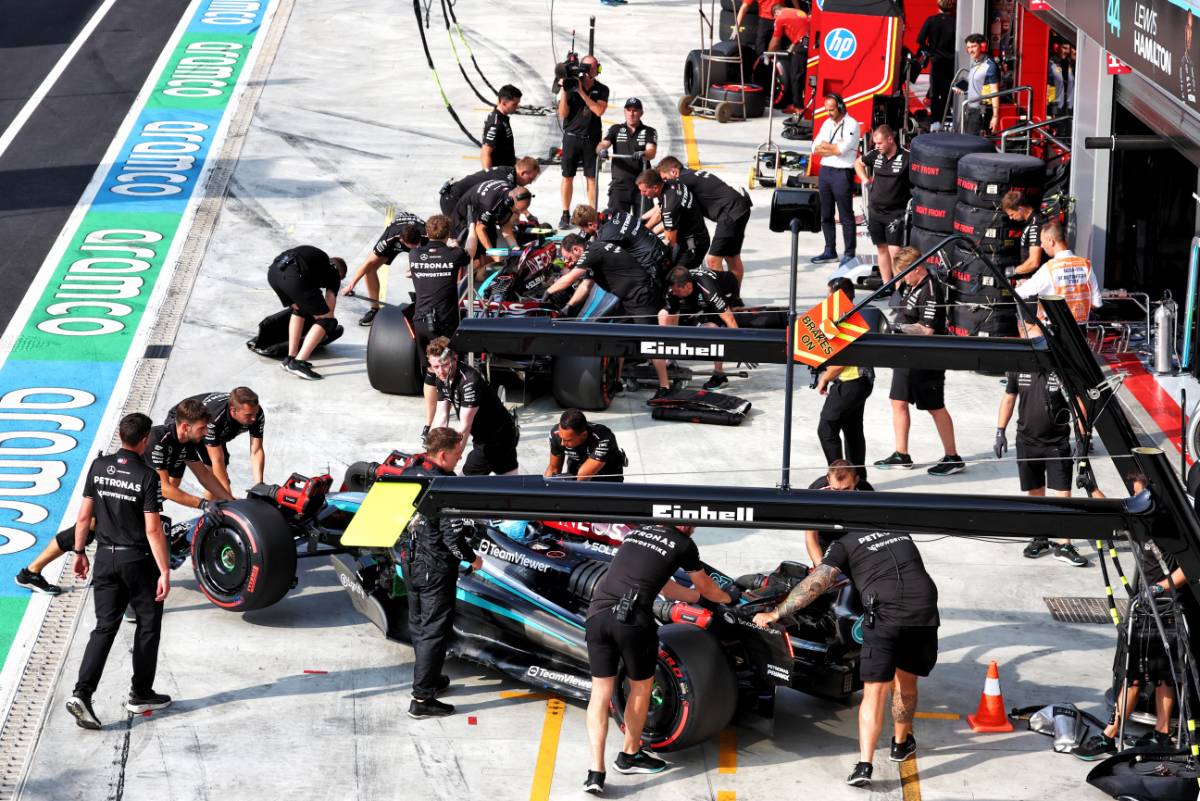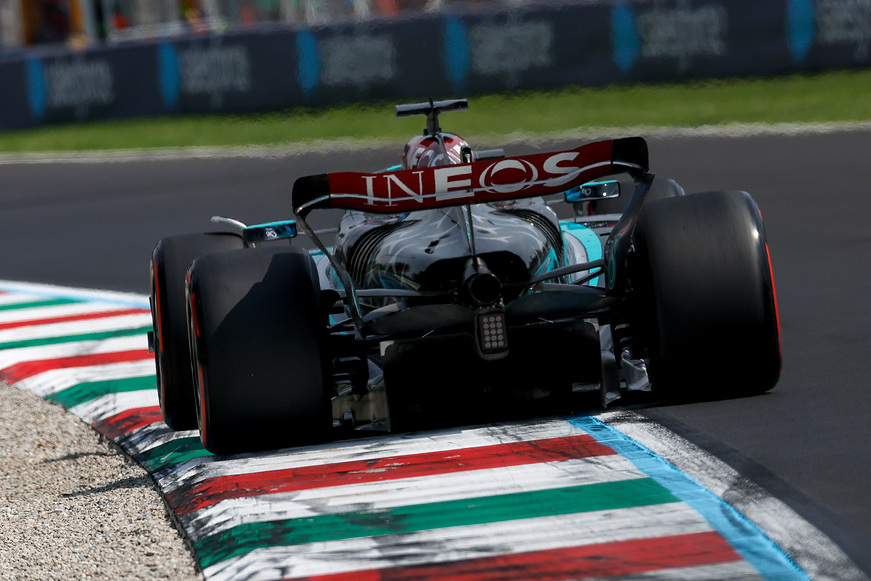
Mercedes trackside engineering director Andrew Shovlin has explained the factors that led to Lewis Hamilton and George Russell experiencing extreme seat temperatures during their Italian Grand Prix.
Throughout both of Friday’s sessions at Monza, Hamilton repeatedly voiced his discomfort over the radio regarding his sizzling hot seat, describing his predicament as “sitting in the sauna with no shorts on”.
Scorching temperatures were also a ‘hot topic’ on Russell’s side of the Mercedes garage, which encouraged the Brackley squad to investigate the issue and attempt to mitigate its effects.
The source of this heat, however, wasn’t just the sweltering 30-plus degree weather at Monza, but a combination of factors linked to the car’s design and to the Temple of Speed’s unique track conditions.
“The most significant cause was in Monza it was extremely hot,” Shovlin explained, speaking on Mercedes post-race video debrief on YouTube.
“The seat and the car is always running pretty hot and there’s a lot of heat generated by the power unit that you’re trying to dissipate.
“You’ve also got a lot of electronic boxes and those are working quite hard and they generate their own temperature so you’re trying to lose that out of the cockpit.
“You’ve also got a lot of electronic boxes and those are working quite hard, and they generate their own temperature, so you’re trying to lose that out of the cockpit.”
A power unit is obviously one of the primary sources of heat inside an F1 car. With so much energy being produced by the engine, engineers are tasked with finding ways to channel that heat away from the driver.

However, another unexpected source of heat came from the underside of the car. Monza’s high-speed straights led to the wooden plank under the car scraping against the track surface at certain points.
This friction generated additional heat, which was conducted through the car’s floor and up into the driver’s seat.
“You’ve also got the car down the straights in Monza,” added Shovlin.
“There are a few places where the plank’s hitting the road and that in itself will generate temperature through friction, and that will start to conduct up through the floor of the car and into the driver’s seat.
“With the ambient temperature at 34 – nothing can be below that – you’ve also got numerous heat sources and it just pushes it up so the cockpit starts to get considerably above a driver’s body temperature, it’s then very hard for them to cool down and the heat just builds and builds.
“Now they’re used to driving in these very difficult environments, it’s just that when you get the very hottest races, it’s a bit extreme and it really does test them.”

In response to the heat issues, Mercedes is actively exploring solutions to improve driver comfort during particularly hot races.
Despite their rigorous training in hot conditions, cooling becomes nearly impossible when the cockpit temperature exceeds the driver’s body heat.
“They do a lot of training at temperature, but the fact is once the cockpit is getting hotter than they are, getting rid of that heat is nigh on impossible,” Shovlin admitted.
"We are looking at ways that we can improve the situation for our drivers, within the sport as well, looking at means that we can apply, additional equipment to the car at these exceptional races that will keep the drivers a bit cooler.
“But as I said, it is a very challenging environment and that is why they do so much training.”
Keep up to date with all the F1 news via Facebook and Twitter







